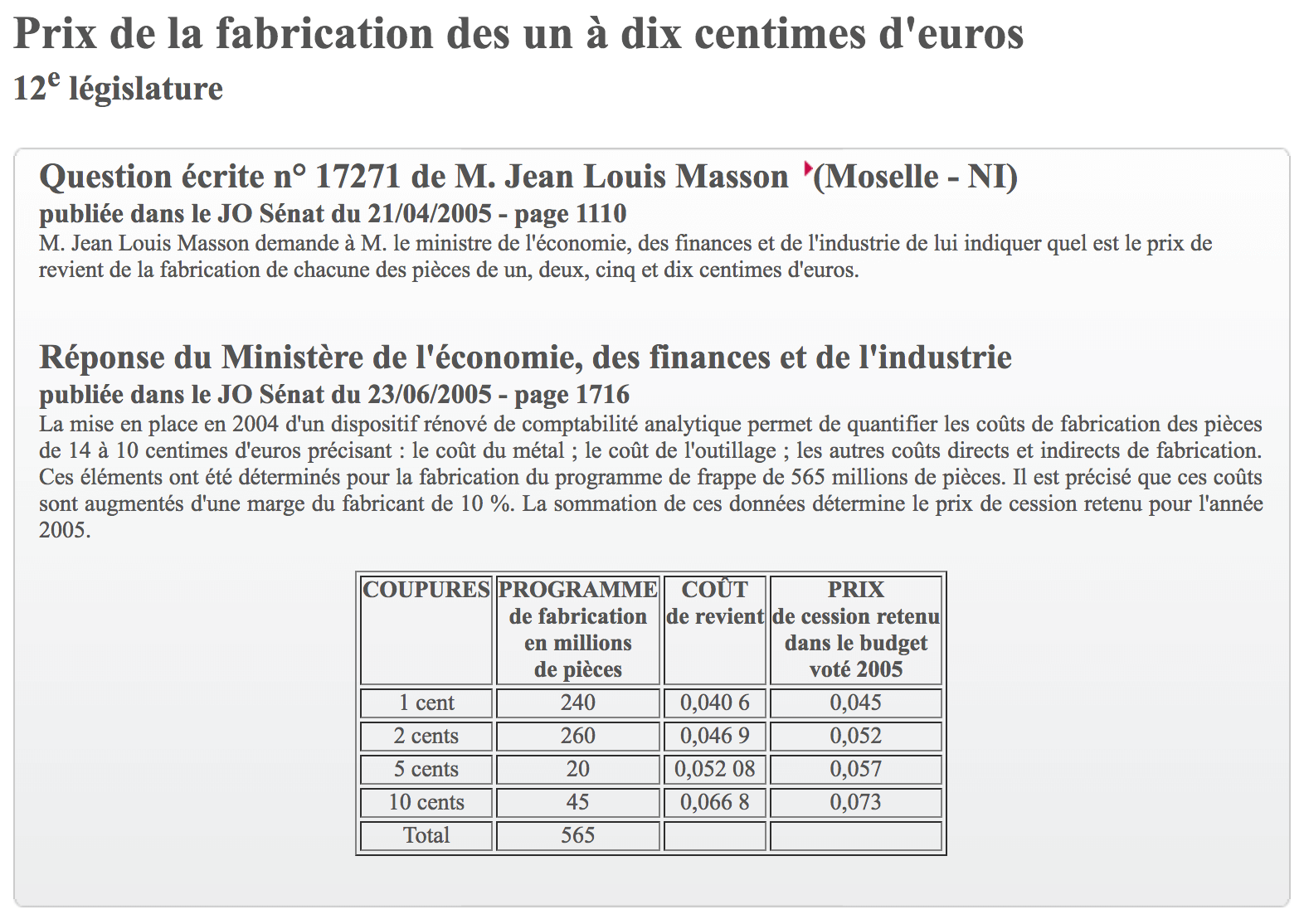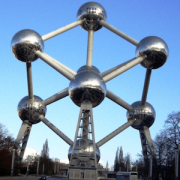The copper-colored coins of our currency
Categories
-
What Brussels says
The European Commission wonders about the fate of the one and two-centime coins of euros. These small copper-colored coins, the utility of which, to block purse, remains to be proved, could disappear, replaced by prices rounded off in the closest five centimes. A strategy already adopted by Finland and Netherlands, which both stopped using them in 2004.
For the moment, four scenarios are for the study: the status quo (coins would stay in circulation), the reduction of the manufacturing cost, the pure and simple elimination or the progressive disappearance after the stop of the manufacturing. " We are going to commit a discussion with States, the central banks and consumers' associations to see which option gets free and can be the object of a private bill ", explained in a communiqué commissioner in charge of the economic and monetary business Olli Rehn.If the European Commission envisages the disappearance of the loose change, it is above all for financial questions. Since the introduction of the euro in 2002, 45,8 billion one and two-centime coins were struck, that is 137 per capita by the Eurozone. According to Brussels, the cost bound to the strike of all these coins would reach even 1,4 billion euros.
An obstacle stays: "people (…) Are afraid of a risk of inflation if they disappear", alert the European Commission. The memory of the coming into force of the euro remains long-lived in reports: in 2002, the passage in the single currency had come along with the increase in prices, the number of traders taking the opportunity to round off labels in the increase.
0 thread
0 Message0 thread0 Message -
The position of certain Countries
Like six other European countries, Ireland will waive the use of 1 and 2 cent euro coins from 28 October 2015.
Ireland was added to the list. After Belgium, Denmark, Finland, Hungary, the Netherlands and Sweden, the country has decided to withdraw 1 and 2 euro cent coins from circulation, as The Guardian reveals on 19 October 2015.
It is the city of Wexford (South-East of the country) that has experienced life without cents. Successfully. 85% of consumers were satisfied with this elimination. This proportion rises to 100% for merchants.While the State intends to remove these parts, their use remains legal. Consumers will still be free to pay or request their exact exchange. In addition, payment by bank card and cheque is not affected by this change since it will remain to the nearest cent.
All the countries that decided to remove these coins from circulation did so for the same reasons. With a real economy. In 2012, Canada saved nearly 11 million euros by removing the one-cent Canadian dollar coin. No figures are available for European countries but since its entry into the euro area in 2004 and its parallel refusal to adopt these cents, Finland has never decided to reverse this decision.
0 thread
0 Message0 thread0 Message -
The official position

As can be seen, the cost of manufacturing copper parts exceeds their face value.
The Monnaie de Paris has a monopoly on the manufacture of coins in France. It is this public institution that resells the coins to the State. The latter then injects the currency into the French economic system. Each year, approximately 1.2 billion coins are invoiced to it. However, the State offsets this negative cost on large denominations: the price of a euro coin is about 15 cents. In this case, the State buys the coins at a much lower price than their face value.
0 thread
0 Message0 thread0 Message -
The Eurocol's position
As a collection, Eurocol must be as complete as possible and will continue to look for all the different coins concerning the "copper" cents whatever their future.
As for their usefulness in trade, this remains questionable because of their cost of production and the incredible quantities handled every day for small sums by millions of Europeans.
Eurocol would therefore be in favour of a pure and simple deletion of these three coins, even if it meant a slight inflation - probably - when they disappeared.
0 thread
0 Message0 thread0 Message
No threads in this forum.
Start a new thread in The copper-colored coins of our currency
